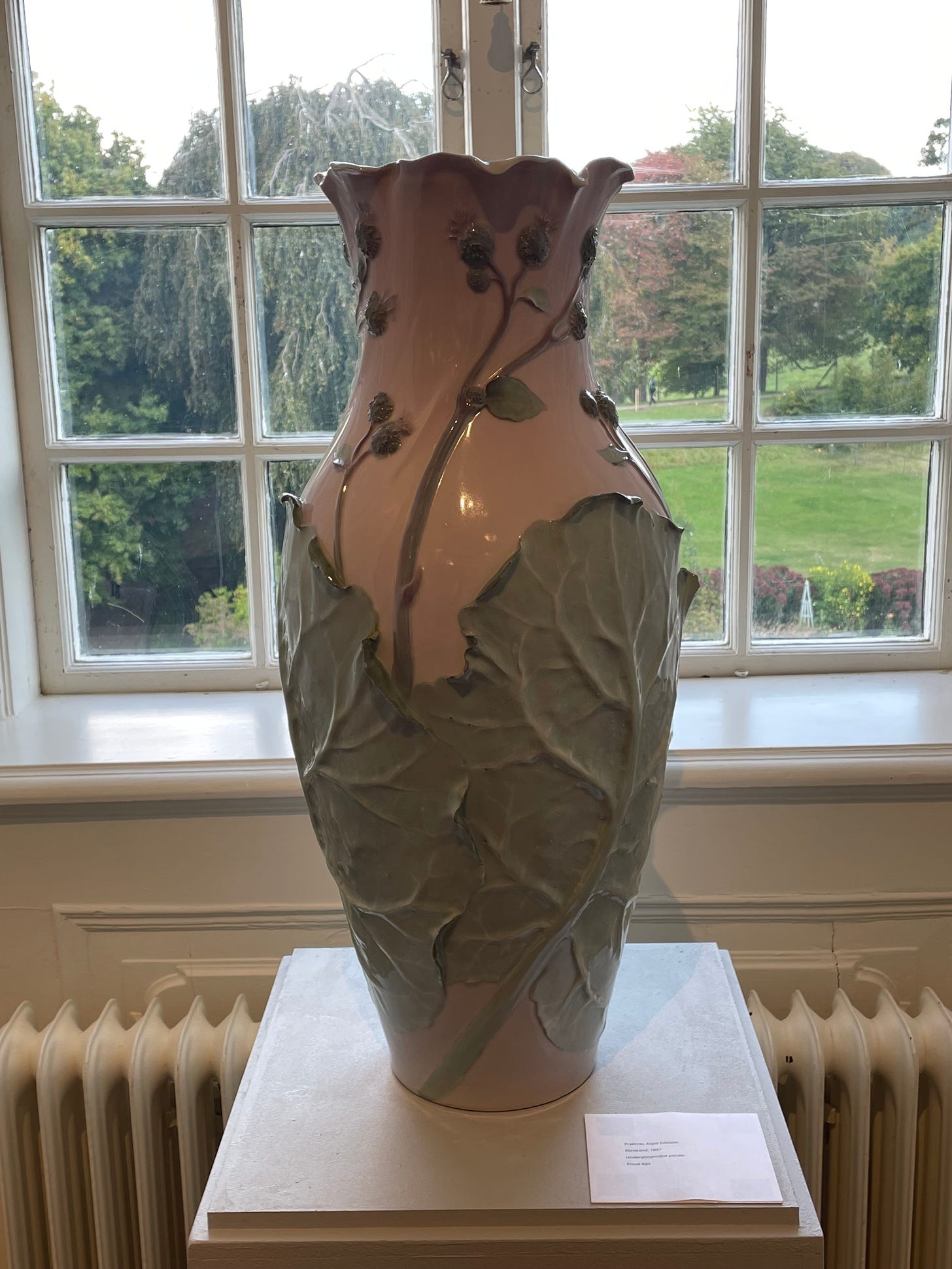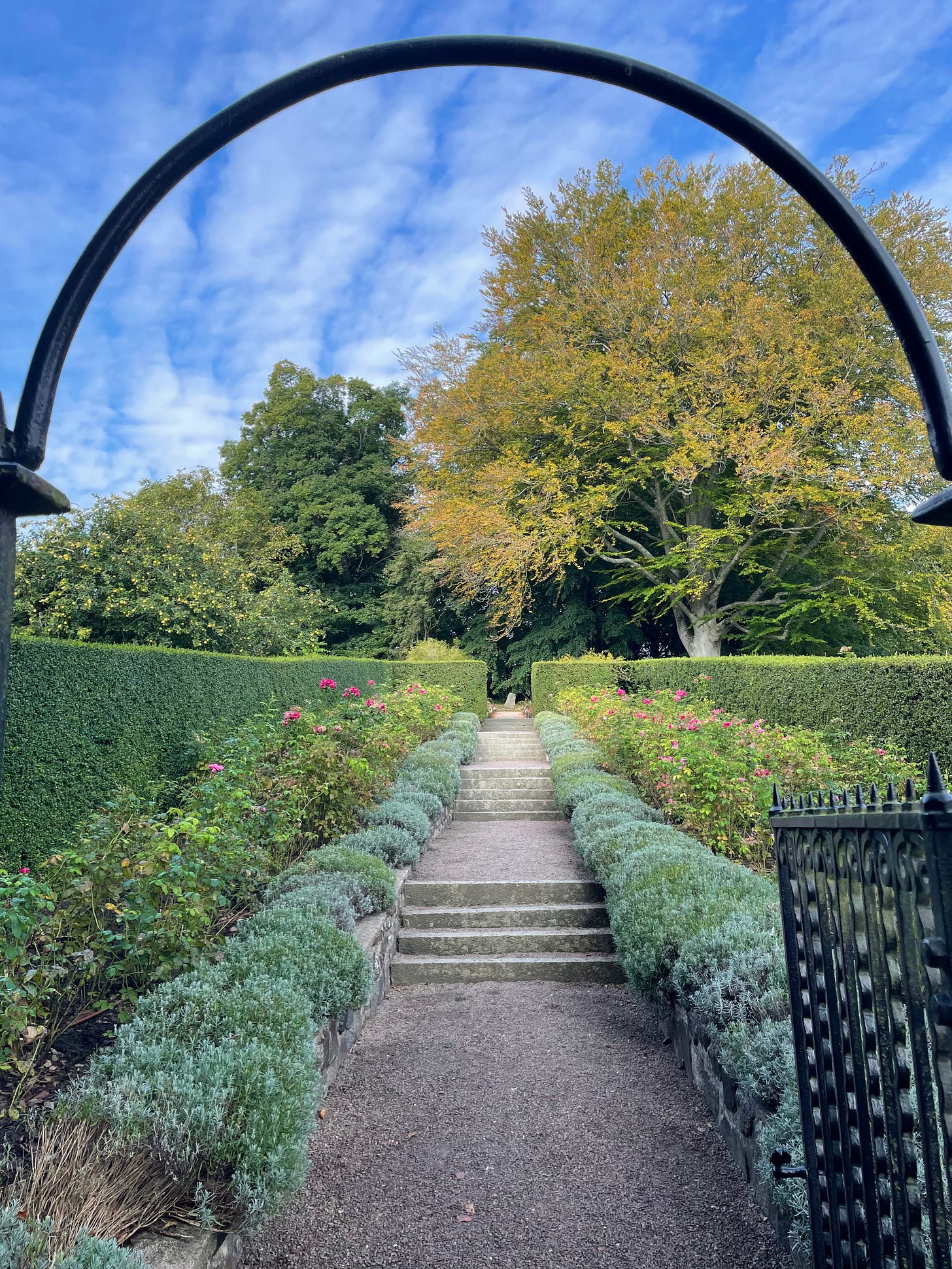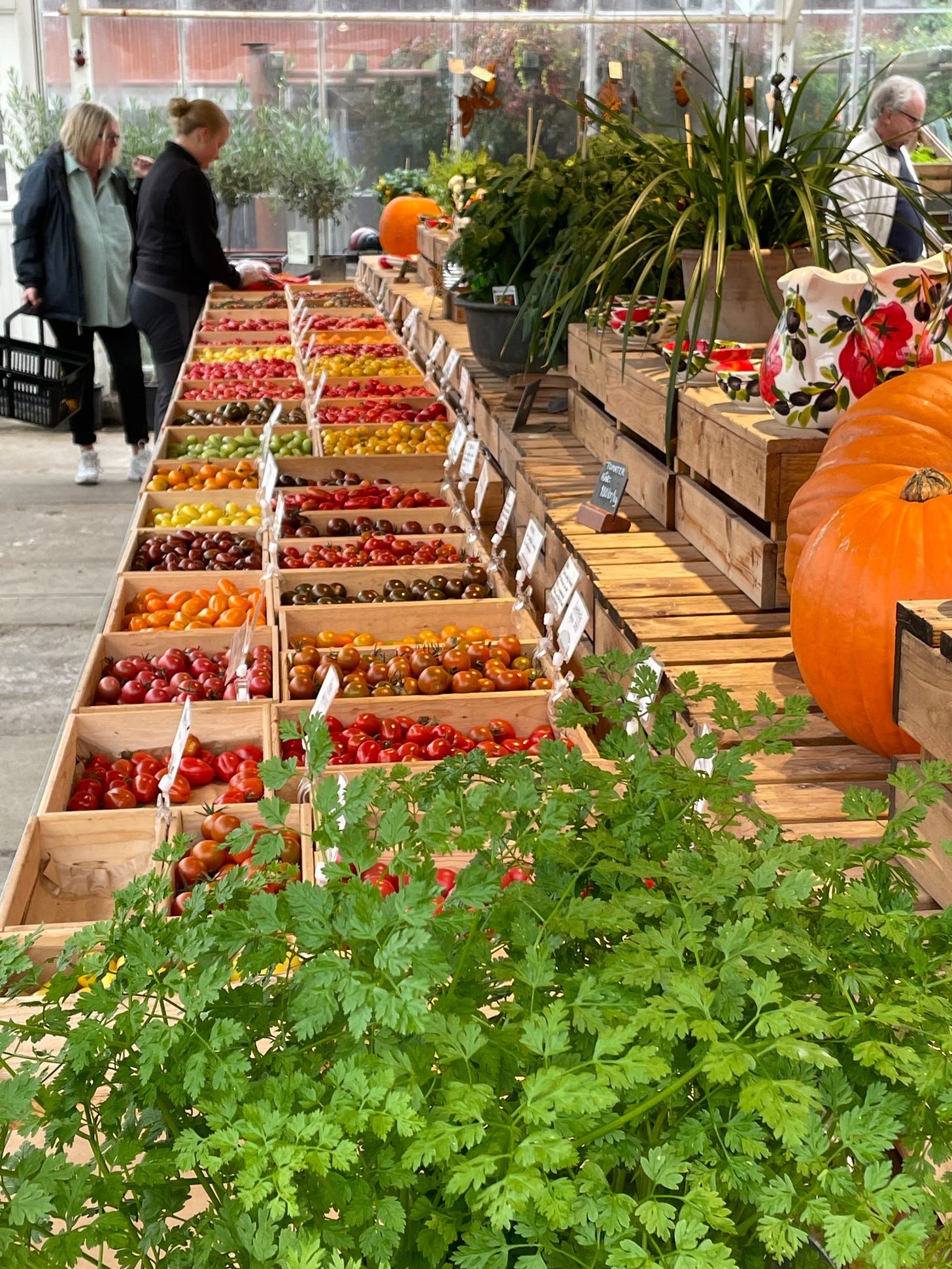Quote of the week
“Art is not a handicraft, it is the transmission of feeling the artist has experienced.” - Leo Tolstoy.
Hello,
The other day I visited an exhibition at Torups castle about the Arts&Crafts movement. Creativity is the key word for me these days. It is such a positiv word. Maybe I feel so because I have been a bureaucrat all my life. Not so much creativity in that world. After retirement I felt I wanted to deal more with creative things. It does not come easy to me, I am not a natural, creative person. I did feel rather well though, when I read a quote by Ernest Hemingway. “We are all apprentices in a craft where no one ever becomes a master.” I guess he was talking about writing, but it probably applies to all areas. There are masters though, but maybe even they feel they always have something more to learn.
The Arts & Crafts movement
The Arts & Crafts movement saw its light in Great Britain in the mid-19th century, mainly as a counter reaction to the rather poor mass productions of industrialism. Industrialism had a negativ, social impact on living conditions in the big cities and the arts & crafts movement was looking for new ways to produce and consume. Back to the roots, one can say.
One of the initial ideologists were the famous author and art critic John Ruskin (1819-1900) who fought for a way to return to pure handicraft. His idea was that handy craft people were the key to production and so they should be given the same status as artists. Easier said than done.
The movement looked to nature for its inspiration. Many of the products were ornamental and you needed an artist to draw the the patterns. That leads us to the artist that is mostly connected with this movement, William Morris (1834-1896). He was influenced by the Middle Ages and the Romantic era. His productions, like wallpaper and material, is full of fantasy patterns from nature.
Morris had a social conscience and wanted to see art in all classes of society, as part of every day life. Everything in a home should be beautiful, otherwise it should not be there. In 1861 he started his company, Marshall, Faulkner & Co, later Morris & Co. Man should not be a slave under the machines. If you worked in a light an airy room you would feel much better. These things we know now, but in those days it was more difficult to achieve. I guess, the working class did not have money to buy beautiful things for their house. It is a little bit of an irony that Morris, who wanted to go back to handcrafted goods, was so successful with his own company, that he had to machine produce some of his products to meet demands. Today Morris is popular again, and his designs can be seen everywhere. I am a big fan of his.
The exhibition I visited took place in Torups castle, about 25 minutes from where I live. It has an interesting story, but that is for another time. There are regular exhibitions in the castle which also has a magnificent dining room. Temporary exhibitions take place in the part of the castle that once was used for guests. The connection here was how Morris and his contemporaries influenced Swedish designers and artists.
Around the 1890s the movement spread outside Great Britain, to become Art Nouveau in France/Belgium and Jugend in Germany and Sweden. The excellent guide informed us about the development in Sweden, how it made an impact on architecture, art and design in different areas, mostly in glassware and porcelain.
It was a perfect place for such an exhibition, since the castle is surrounded by a huge park, with a pond and huge forest areas. The lady of the castle at the time, Henriette Coyet was very interested in the movement, and put a lot of effort in landscaping the gardens. An Arts & Crafts garden should not only be beautiful, but usable. Edible plants were mixed with plants beautiful to look at. It was a perfect day for an outing and a touch of arts and crafts.
The Art of Tomatoes
I was a little bit surprised when my friends called me one morning and asked if I wanted to join them for a visit to the ‘House of Tomatoes’. Always interested in visiting new places, I hurried on with my breakfast and joined them. It is a garden center where they specialised in growing tomatoes. I have never before seen so many different shapes of tomatoes. What you see in the supermarkets are, more or less, the same variety. They also sold spices, bulbs and plants. I settled for a few differently shaped tomatoes in different colours, and a whole box full of ‘second quality’ tomatoes, mostly cherry tomatoes. Turned out to be high quality. I used the red cherry tomatoes make a tomato sauce which I will freeze and later use for pasta dishes. I also made a sort of cold sauce/juice with some spices for giving another dish a little bit of ‘umphf’. It tastes very good, so I have high hopes for future cooking. There are still some left, so thinking I might make some tomato chutney.
We also visited nearby Wallåkra Pottery Factory with a history since 1864. They still make the pottery as they did in the old days. First they produce the pottery by hand, made from clay found in the surroundings. The pottery is left to dry for a few months until it is time to put it into the old oven to burn it. The oven is fuelled by coal and salt, producing beautiful salt-glazed tanned pots.
A few things that caught my attention this week
Books
Dame Hilary Mantel, one of Britain’s most decorated author, has passed away. She was famous for her historical fiction novels, especially her trilogy on Thomas Cromwell. For the two first books, Wolf Hall and Bring Up the Bodies, she won the Booker Price, and for the third instalment, The Mirror & the Light, she was longlisted. I have still to read the last one, but the two first are fantastic.
TV-series
I am watching an Israeli thriller called The Grave. After an earthquake a grave is found in a national park, which contains three bodies. When analysing dna tests it turns out that the dna belongs to three living persons. I have seen half so far, and I am just wondering how it will all be explained in the end.
Links
I have two blogs;
The Content Reader, (in English) where I write about books
and
Den tillfälliga besökaren (in Swedish) where I share my life and interests in books, history, travel and everything that makes life interesting.
If you want to leave a comment or discuss something you can comment in the post or send me an e-mail to thecontentreadernewsletter(at)gmail.com










